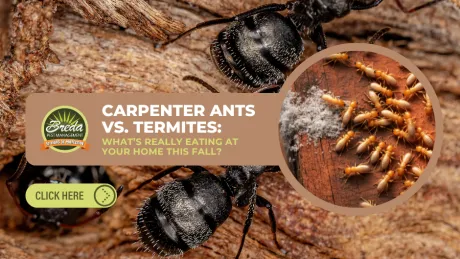Bats have a reputation for carrying a variety of diseases, including rabies. If you have been exposed to a bat, many healthcare professionals recommend that you immediately receive a rabies vaccine to keep you and your family safe. Not only do bats carry rabies, but they can cause serious damage to your home, which is why it is important to try to prevent a bat infestation in the first place. Here are six things that you can do to keep bats out of your home:
1) Inspecting Your Home for Holes
The first thing you should do is to inspect your home for any holes that could potentially serve as an entry point for bats. Most of the areas that need inspecting will be at least 8 feet off of the ground, and pay particular attention to the roof edges. Fascia boards, loose tiles, vents, and chimneys are all likely locations for small, overlooked holes.
Since bats can fit into holes as small as 3/8 inch, electrical holes and plumbing holes also need to be inspected. There is a chance that bats will find entry through these, but stainless steel wool or caulking are good preventative methods for filling electrical and plumbing holes to prevent any bats from getting into your home.
2) Sealing The Roof
Any area that is off of the ground will naturally be an ideal haven for bats. For this reason, the roof is at a heightened risk for a bat infestation. For fascia roofs, it is recommended to use a sealant or bolts, while netting works well with tile roofs. Any other gaps in the roof can be sealed shut by polyurethane foam.
3) Covering Chimneys and Vents
If you don't have a 24/7 fire burning in your fireplace, the chimney is a great place for bats to find entry into your home. Chimney caps are an easy fix to prevent bats and other forms of wildlife from gaining entry into your home. While many people use wire mesh to seal holes, other wildlife like squirrels and mice can chew through wire mesh. Galvanized steel is the best option for closing up openings around chimneys. It can also be used to prevent bat access to vents and gutters.
4) Guarding Your Windows and Doors
Window screens seem like an obvious solution to keeping wildlife out, but a window screen has no purpose if it is are left open. Although it seems like an obvious solution, it is recommended to keep all windows and window screens shut, especially when it is dark outside. Even the cracks beneath doors are possible entry points for bats, which can be prevented by adding draft-guards beneath your doors to an attic or the outside.
5) Replacing Lights That Attract Bugs
Another preventative method for bats has to do less with reducing entry points, but actually has to do with decreasing the number of bats. Lights are infamous for attracting a large amount of bugs at night, which is the primary food source for bats. Swapping your outdoor light bulbs with yellow lights attracts less bugs, which will result in less bats.
6) Contact a Professional
Bats carry a variety of diseases and also happen to be protected in many states, which is why they shouldn't be allowed in the house. In order to prevent bats from getting into your home, your home will need some sort of "bat-proofing". It is recommended that you contact a local pest control professional or a wildlife conservation agency for help with "bat-proofing" your home. Contacting a wildlife agency or a pest control professional can help you decide on the next step in bat prevention.



